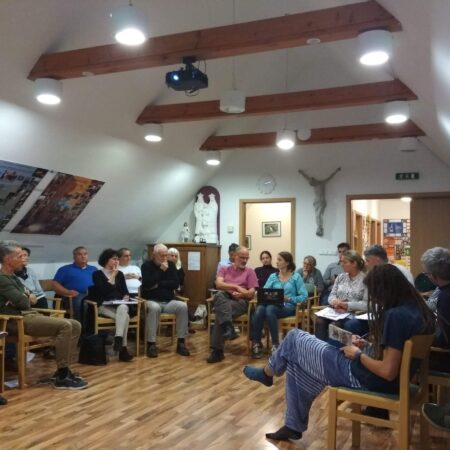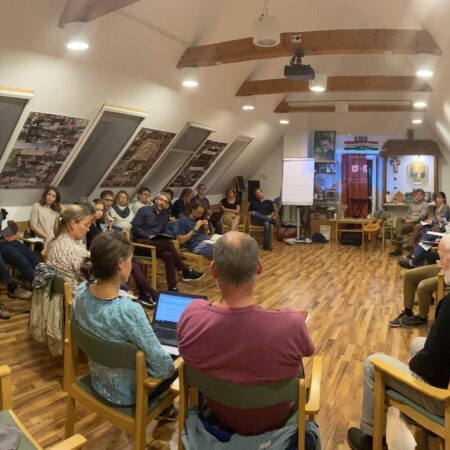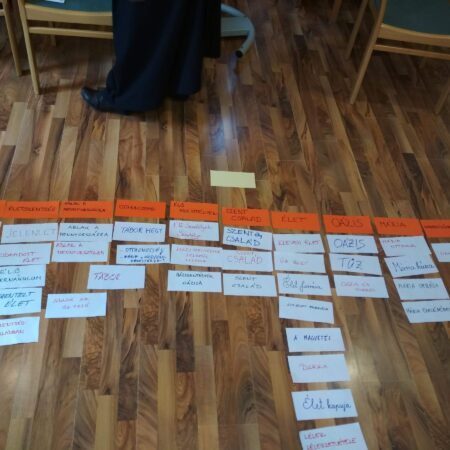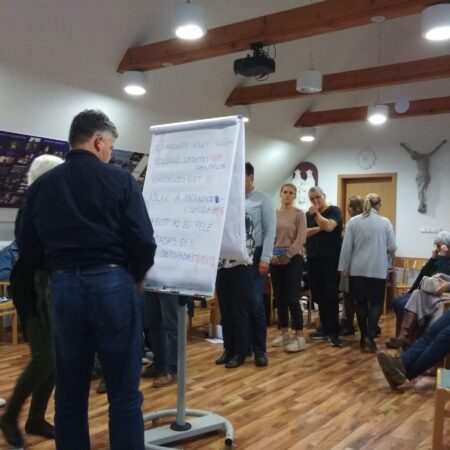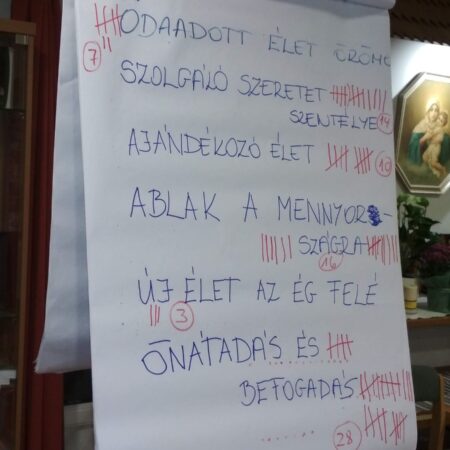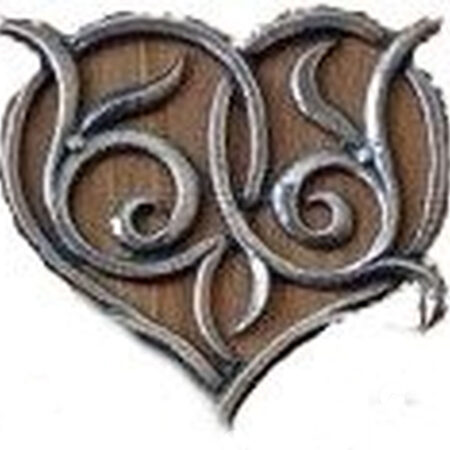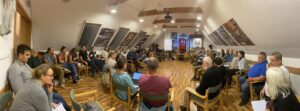
Inflame our Hearts with Your Love
“Szeretet áradjon köztünk … Let love flow between us,
let love burn within us, let love fill us, we pray to you, Lord.
Let us be united in our hearts in fraternal love,
we are all one heart in you. Inflame our hearts with your love.”
These are the words of a Hungarian song that is popular in Hungary and that the Schoenstatt family of Hungary likes to sing. It captures a characteristic trait of Hungarians: they are people of the heart. At the same time, they are also proud conquerors who, according to legend, probably came from the Urals on horseback many years ago and conquered the Carpathian Basin, their current homeland.
During the October Week this year,
the annual conference of the Schoenstatt family, about sixty representatives of individual groups in the Schoenstatt Movement searched for the name and mission of the national Schoenstatt Shrine in Óbudavár on Lake
Balaton. For almost forty years already the Schoenstatt family of Hungary has had conferences there and a flourishing Schoenstatt Center has grown there. The first Schoenstatt Shrine on Hungarian soil has been standing there for eighteen years. It is a source of grace, peace, and joy, a “Tabor” for countless many families, youth, and children.
What experiences have we already had in Óbudavár? What does the shrine in Óbudavár mean to us? Our roots, our motives, what fruits have we been able to harvest? How did we come to build a Schoenstatt Shrine and Center? How do we experience the charism of Father Joseph Kentenich, especially in the growth and leadership of our community? What is the origin of the Marriage Pathway that in a short period of time has spread far beyond the boundaries of Hungary? What is the purpose of the second version of the Marriage Pathway: The Marriage Pathway in the Light of the Eucharist? How did the Hungarian community of Schoenstatt youth come into being?
What is the cultural profile, the character of the Hungarians?
How did it come about that our Schoenstatt Shrine is the fruit of over 100 home shrines? What is the significance of the life-offering of Csaba Ozsvári and many of our other beloved? What do the symbols in our Schoenstatt Shrine mean to us: the jug in the shrine, the Hungarian cross of unity, the statue of the Hungarian royal family Stefan, Gisela, and Emmerich, who are part of the founding of the Hungarian Empire? What does the Hungarian crown of the “Queen of Life,” the Mariengarden that surrounds the shrine, mean to us? All signs of life and surrender. Short 15-minute presentations were given on all of these questions, vividly illustrating the rich life of the Hungarian Schoenstatt Family.
In the next step, large and small groups collected and grouped the values that had become important in this life process in the Movement and in the hearts of individuals. The values and symbols formulated include the Holy Royal Family, self-giving and acceptance, generosity, the house of Mary, the “living life”, the community of hearts, reaching out to one another, unity, the network of living home shrines, the Marian-garden, the window to heaven, Sursum corda.
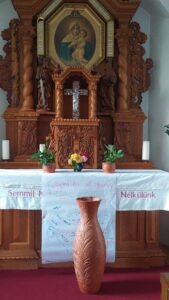
The presence of the Holy Spirit and the power of unity were evident during the October Week. Everyone who attended it experienced how, like a miracle, the name and mission of the National Shrine in Óbudavar(needs an accent over the second a) was born in “revolutionary fervor” on October 23 (the Hungarian national holiday in memory of the Hungarian Revolution of 1956):
The Shrine of the “Hearts Inscribed in One Another”.
The name, the mission, is valid and understandable on many levels. It expresses the relationship between the couple and the quality of the relationship in general, the covenant of love, total gift and acceptance of self, the Eucharistic and trinitarian dimensions of the Sacrament of Marriage, the attachment to the Blessed Virgin Mary in the covenant of love, the relationship of the home shrines to each other, the unity of the entire Hungarian Schoenstatt family and the Church. Ultimately, it is a matter of the maturation of love and the covenant of love down to the deepest depths, the inscribing of hearts in one another, the Inscriptio cordis in cor. It is about a deep communion of hearts and destiny, which we have received and can expect as a grace in the shrine in Óbudavár.
“Szeretet árodjon köztünk … Let love flow between us …”
These words of the Third Founding Document illustrate our mission:
We want to surrender ourselves to the work masters, Our Lord and Our Lady, not only by offering our wills and minds and memory, but especially by offering our hearts. We are not satisfied with a union of wills. Our aim is higher: We want to strive for a profound union of hearts, a perfect fusion of hearts, an inscriptio cordis in cor–a perfect inscription of one heart into the other.
In this regard the heart reveals a twofold depth:
It is the symbol of the emotions, of the unconscious and subconscious life [of the soul]. We want to be so detached from ourselves that even the subconscious life of our souls delivers itself unreservedly and unconditionally as an instrument to the work masters [Jesus and Mary]. That is the meaning of the words: Three hearts and one beat. Such a perfect detachment out of love is not possible without a positive attitude to cross and suffering, as is expressed in the inscriptio. Universality or infinitism of the depths demands of us a perfect detachment in the spirit of the inscriptio. As often as we see the heart, the prayer will rise to our lips: “Accept, O Lord, through the hands of our Mother Thrice Admirable and Queen of Schoenstatt, my entire freedom. Accept my memory, my understanding, my emotions, my whole heart. You have given everything to me. I give everything back to you without reserve. Do with it what you will.”
The heart may also be interpreted as the quintessence and core of the entire personality. Our medal expressly illustrates the perfect surrender of our entire selves to Our Lord and the Blessed Mother in the spirit of instrumentality. If by its very nature the instrument knows detachment and surrender, the perfect instrument—as is expressed in the symbol of the heart—will strive for perfect detachment and perfect surrender in every way possible.“
J. Kentenich, Third Founding Document December 8, 1944.
